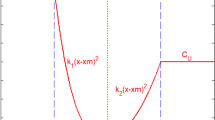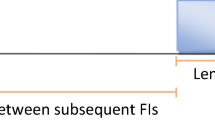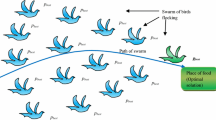Abstract
Equipment maintenance is momentous for improving production efficiency, how to integrate maintenance into production to address uncertain problems has attracted considerable attention. This paper addresses a novel approach for integrating preventive maintenance (PM) into production planning of a complex manufacturing system based on availability and cost. The proposed approach relies on two phases: firstly, this study predicts required capacity of each machine through extreme learning machine algorithm. Based on analyzing historical data, the opportunistic periods are calculated for implementing PM tasks to have less impact on production and obtain the PM interval and duration. Secondly, this study obtains the scheduling planning and the least number of maintenance personnel through an improved ant colony optimization algorithm. Finally, the feasibility and benefits of this approach are investigated based on empirical study by using historical data from real manufacturing execution system and equipment maintenance system. Experimental results demonstrate the effectiveness of proposed approach, reduce personnel number while guarantee the maintenance tasks. Therefore, the proposed approach is beneficial to improve the company’s production efficiency.

















Similar content being viewed by others
Abbreviations
- \(\beta \) :
-
weight matrix of ELM output layer
- B :
-
bias matrix of ELM hidden layer
- C :
-
the adjusted parameter of ELM
- \(g(\cdot )\) :
-
activation function
- I :
-
identity matrix
- L :
-
number of ELM hidden layer nodes
- \(L_{lop}\) :
-
last overlap list
- \(L_{op}\) :
-
overlap list
- m :
-
number of ELM input features
- N :
-
number of ELM training samples
- n :
-
number of ELM output caregories
- \(N_p\) :
-
the number of PM tasks
- \(N_{ant}\) :
-
the number of ants in ACO algorithm
- \(S_d\) :
-
total distance
- T :
-
output matrix of ELM
- \(T_c\) :
-
sum of \(T_{prc_i}, 1\le i\le 12\) in the past for each machine
- \(T_{cc}\) :
-
CM cycle time
- \(T_{cds_i}\) :
-
hourly CM duration of day shift
- \(T_{cds}\) :
-
CM duration of day shift
- \(T_{cd}\) :
-
CM duration of machine
- \(T_{maxc}\) :
-
maximum sum of \(T_{prc_i}, 1\le i\le 12\) in the past for each machine
- \(T_{maxpd}\) :
-
maximum PM duration
- \(T_{minc}\) :
-
minimum sum of \(T_{prc_i}, 1\le i\le 12\) in the past for each machine
- \(T_{minpd}\) :
-
minimum PM duration
- \(T_{op_i}\) :
-
hourly opportunity time
- \(T_{p_i}\) :
-
PM duration of one PM type
- \(T_{pc}\) :
-
PM cycle time
- \(T_{prc_i}\) :
-
hourly predicted required capacity
- \(Tb_d\) :
-
distance table
- \(Tb_p\) :
-
path table
- X :
-
input feature matrix of ELM training samples
- W :
-
weight matrix of ELM hidden layer
- ACO:
-
ant colony optimization
- CM:
-
corrective maintenance
- ELM:
-
extreme learning machine
- EMS:
-
equipment maintenance system
- MES:
-
manufacturing execution system
- MSE:
-
mean square error
- PCA:
-
principal component analysis
- PdM:
-
predictive maintenance
- PM:
-
preventative maintenance
- TSP:
-
traveling salesman problem
References
Ab-Samat, H., & Kamaruddin, S. (2014). Opportunistic maintenance (OM) as a new advancement in maintenance approaches: A review. Journal of Quality in Maintenance Engineering, 20(2), 98–121.
Aizpurua, J. I., Catterson, V. M., Papadopoulos, Y., Chiacchio, F., & D’Urso, D. (2017). Supporting group maintenance through prognostics-enhanced dynamic dependability prediction. Reliability Engineering & System Safety, 168, 171–188.
Barlow, R., & Hunter, L. (1960). Optimum preventive maintenance policies. Operations research, 8(1), 90–100.
Berenguer, C., Chu, C., & Grall, A. (1997). Inspection and maintenance planning: An application of semi-Markov decision processes. Journal of intelligent manufacturing, 8(5), 467–476.
Boland, P. J. (1982). Periodic replacement when minimal repair costs vary with time. Naval Research Logistics Quarterly, 29(4), 541–546.
Butollo, F. & Lüthje, B. (2017). ‘Made in China 2025’: Intelligent manufacturing and work. The new digital workplace. How new technologies revolutionise work, pp. 42–61.
Canfield, R. V. (1986). Cost optimization of periodic preventive maintenance. IEEE Transactions on Reliability, 35(1), 78–81.
Chalabi, N., Dahane, M., Beldjilali, B., & Neki, A. (2016). Optimisation of preventive maintenance grouping strategy for multicomponent series systems: Particle swarm based approach. Computers and Industrial Engineering, 102, 440–451.
Colorni, A., Dorigo, M., Maniezzo, V., et al. (1992). Distributed optimization by ant colonies. In: Proceedings of the first European conference on artificial life (Vol. 142, pp. 134–142). Cambridge, MA.
Van Do, P., Barros, A., Bérenguer, C., Bouvard, K., & Brissaud, F. (2013). Dynamic grouping maintenance with time limited opportunities. Reliability Engineering and System Safety, 120, 51–59.
Fitouhi, M.-C., & Nourelfath, M. (2012). Integrating noncyclical preventive maintenance scheduling and production planning for a single machine. International Journal of Production Economics, 136(2), 344–351.
Huang, G.-B., Zhou, H., Ding, X., & Zhang, R. (2011). Extreme learning machine for regression and multiclass classification. IEEE Transactions on Systems, Man, and Cybernetics Part B (Cybernetics), 42(2), 513–529.
Huang, G.-B., Zhu, Q.-Y., & Siew, C.-K. (2006). Extreme learning machine: theory and applications. Neurocomputing, 70(1–3), 489–501.
Jezzini, A., Ayache, M., Elkhansa, L., Makki, B., & Zein, M. (2013). Effects of predictive maintenance (PdM), Proactive maintenace (PoM) and Preventive maintenance (PM) on minimizing the faults in medical instruments. In: 2013 2nd International conference on advances in biomedical engineering (pp. 53–56). IEEE.
Ji, M., He, Y., & Cheng, T. E. (2007). Single-machine scheduling with periodic maintenance to minimize makespan. Computers and operations research, 34(6), 1764–1770.
Keizer, M. C. O., Flapper, S. D. P., & Teunter, R. H. (2017). Conditionbased maintenance policies for systems with multiple dependent components: A review. European Journal of Operational Research, 261(2), 405–420.
Lasi, H., Fettke, P., Kemper, H.-G., Feld, T., & Hoffmann, M. (2014). Industry 4.0. Business and Information Systems Engineering, 6(4), 239–242.
Lee, J., Bagheri, B., & Kao, H.-A. (2015). A cyber-physical systems architecture for industry 4.0-based manufacturing systems. Manufacturing Letters, 3, 18–23.
Li, L. (2018). China’s manufacturing locus in 2025: With a comparison of “Made-in-China 2025” and “Industry 4.0”. Technological Forecasting and Social Change, 135, 66–74.
Lin, K.-Y. (2018). User experience-based product design for smart production to empower industry 4.0 in the glass recycling circular economy. Computers and Industrial Engineering, 125, 729–738.
Lin, Z.-L., Huang, Y.-S., & Fang, C.-C. (2015). Non-periodic preventive maintenance with reliability thresholds for complex repairable systems. Reliability Engineering and System Safety, 136, 145–156.
Nakagawa, T. (1986). Periodic and sequential preventive maintenance policies. Journal of Applied Probability, 23(2), 536–542.
Pereira, C. M., Lapa, C. M., Mol, A. C., & Da Luz, A. F. (2010). A particle swarm optimization (pso) approach for non-periodic preventive maintenance scheduling programming. Progress in Nuclear Energy, 52(8), 710–714.
Reinelt, G. (1991). TSPLIB’A traveling salesman problem library. ORSA Journal on Computing, 3(4), 376–384.
Saaksvuori, A., & Immonen, A. (2008). Product lifecycle management. Berlin: Springer.
Sheikhalishahi, M., Azadeh, A., & Pintelon, L. (2017). Dynamic maintenance planning approach by considering grouping strategy and human factors. Process Safety and Environmental Protection, 107, 289–298.
Stark, J. (2015). Product lifecycle management. In: Product lifecycle management (Vol. 1, pp. 1–29). Springer, Cham.
Valdez, F., Moreno, F., & Melin, P. (2020). A Comparison of ACO, GA and SA for Solving the TSP Problem. In: Hybrid intelligent systems in control, pattern recognition and medicine (pp. 181–189). Springer, Cham.
van Lier, B. (2014). Developing the industrial internet of things with a network centric approach: A holistic scientific perspective on smart industries. In: 2014 18th International conference on system theory, control and computing (ICSTCC) (pp. 324–329). IEEE.
Venkataraman, V. (2007). Maintenance engineering and management. New Delhi: PHI Learning Pvt. Ltd.
Vu, H. C., Do, P., Barros, A., & Berenguer, C. (2014). Maintenance grouping strategy for multi-component systems with dynamic contexts. Reliability Engineering and System Safety, 132, 233–249.
Wübbeke, J., Meissner, M., Zenglein, M. J., Ives, J., & Conrad, B. (2016). Made in China 2025: The making of a high-tech superpower and consequences for industrial countries. Mercator Institute for China Studies, 17, 2017–09.
Xia, T., Jin, X., Xi, L., & Ni, J. (2015). Production-driven opportunistic maintenance for batch production based on MAM-APB scheduling. European Journal of Operational Research, 240(3), 781–790.
Yak, Y., Forward, K., & Dillon, T. (1985). Modelling the effect of transient faults in fault tolerant computer systems. IFAC Proceedings Volumes, 18(12), 129–133.
Zhou, X., & Shi, K. (2019). Capacity failure rate based opportunistic maintenance modeling for series-parallel multi-station manufacturing systems. Reliability Engineering and System Safety, 181, 46–53.
Acknowledgements
This research was supported by National Key R&D Program of China, No. 2018YFE0105000, the National Natural Science Foundation of China under Grant No. 51475334, the Shanghai Municipal Commission of science and technology No. 19511132100 and the Fundamental Research Funds for the Central Universities of China under Grant No. 22120170077.
Author information
Authors and Affiliations
Corresponding author
Additional information
Publisher's Note
Springer Nature remains neutral with regard to jurisdictional claims in published maps and institutional affiliations.
Rights and permissions
About this article
Cite this article
Li, L., Wang, Y. & Lin, KY. Preventive maintenance scheduling optimization based on opportunistic production-maintenance synchronization. J Intell Manuf 32, 545–558 (2021). https://doi.org/10.1007/s10845-020-01588-9
Received:
Accepted:
Published:
Issue Date:
DOI: https://doi.org/10.1007/s10845-020-01588-9




